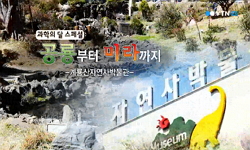Recently, museums at home and abroad have been developing awareness to share an increasing number of collections with the public. It also means that various measures should be sought to expand access to the collection, as well as to collect and displa...
http://chineseinput.net/에서 pinyin(병음)방식으로 중국어를 변환할 수 있습니다.
변환된 중국어를 복사하여 사용하시면 됩니다.
- 中文 을 입력하시려면 zhongwen을 입력하시고 space를누르시면됩니다.
- 北京 을 입력하시려면 beijing을 입력하시고 space를 누르시면 됩니다.
https://www.riss.kr/link?id=A106888421
- 저자
- 발행기관
- 학술지명
- 권호사항
-
발행연도
2020
-
작성언어
Korean
-
주제어
Museum ; Open Storage ; Accessibility ; Space Syntax ; Exhibition Space ; 박물관 ; 개방형 수장고 ; 접근성 ; 공간구문론 ; 전시공간
-
등재정보
KCI등재
-
자료형태
학술저널
-
수록면
3-14(12쪽)
-
KCI 피인용횟수
0
- 제공처
-
0
상세조회 -
0
다운로드
부가정보
다국어 초록 (Multilingual Abstract)
This opening is called open storage, visible storage, and is becoming increasingly prominent at home and abroad. Open storage is opening up previously banned spaces, creating a new paradigm of access to "exhibitions and watches" for visitors.
Therefore, this study divided open storage view accessibility into exhibition form and type, and compared case views through VGA and AX analysis. The spatial composition of the analyzed case hall was divided into four types: water burial exhibition type, reference exhibition type, open storage type and complex type. Based on this, the accessibility was identified by finding visual connectivity and integration, and comparing the connectivity and integration of the visitor's circulation system through the axis. As a result, major exhibitions and viewing storage are heavily influenced by access and control by space location and operation. This allows efficient access through architectural cores and circular induction, even if open storage is invisible or hidden. This means that open storage can be the central node, even if it is not located on the main moving track, because the functions of the space are overlaid. Therefore, such diverse viewing of the open storage suggests that various architectural approaches and research are needed.
Recently, museums at home and abroad have been developing awareness to share an increasing number of collections with the public. It also means that various measures should be sought to expand access to the collection, as well as to collect and display it. Therefore, studies are actively being conducted on how to open storage, which is a taboo space.
This opening is called open storage, visible storage, and is becoming increasingly prominent at home and abroad. Open storage is opening up previously banned spaces, creating a new paradigm of access to "exhibitions and watches" for visitors.
Therefore, this study divided open storage view accessibility into exhibition form and type, and compared case views through VGA and AX analysis. The spatial composition of the analyzed case hall was divided into four types: water burial exhibition type, reference exhibition type, open storage type and complex type. Based on this, the accessibility was identified by finding visual connectivity and integration, and comparing the connectivity and integration of the visitor's circulation system through the axis. As a result, major exhibitions and viewing storage are heavily influenced by access and control by space location and operation. This allows efficient access through architectural cores and circular induction, even if open storage is invisible or hidden. This means that open storage can be the central node, even if it is not located on the main moving track, because the functions of the space are overlaid. Therefore, such diverse viewing of the open storage suggests that various architectural approaches and research are needed.
참고문헌 (Reference)
1 김보영, "현대 뮤지엄 개방형 수장고의 관람공간 특성 연구" 홍익대학교 2020
2 김기범, "소장품특성을 고려한 박물관 실내공간 디자인에 대한 연구" 1994
3 양지연, "소장품의 활용과 개방형 수장고의 교육적 역할에 대한 연구" 한국문화교육학회 9 (9): 1-23, 2014
4 서울특별시, "서울시통합수장고기본계획" 한국문화공간건축학회 2017
5 임채진, "박물관 수장영역의 공간조건" 2001
6 국립현대미술관, "미술품 수장․보존센터 건립방안연구" 한국문화관광연구원 2011
7 김연진, "권역별 종합 수장고 건립 기초 연구" 한국문화관광연구원 2010
8 김연진, "공공수장고 건립관련 기본 구상" 한국문화관광연구원 2008
9 국립민속박물관, "개방형수장고 및 정보센터 건립 기본계획 연구" 한국문화공간건축학회 2014
10 우재희, "개방형 수장고의 수장전시 공간개념과 공간 특성 기초 연구" 홍익대학교 2018
1 김보영, "현대 뮤지엄 개방형 수장고의 관람공간 특성 연구" 홍익대학교 2020
2 김기범, "소장품특성을 고려한 박물관 실내공간 디자인에 대한 연구" 1994
3 양지연, "소장품의 활용과 개방형 수장고의 교육적 역할에 대한 연구" 한국문화교육학회 9 (9): 1-23, 2014
4 서울특별시, "서울시통합수장고기본계획" 한국문화공간건축학회 2017
5 임채진, "박물관 수장영역의 공간조건" 2001
6 국립현대미술관, "미술품 수장․보존센터 건립방안연구" 한국문화관광연구원 2011
7 김연진, "권역별 종합 수장고 건립 기초 연구" 한국문화관광연구원 2010
8 김연진, "공공수장고 건립관련 기본 구상" 한국문화관광연구원 2008
9 국립민속박물관, "개방형수장고 및 정보센터 건립 기본계획 연구" 한국문화공간건축학회 2014
10 우재희, "개방형 수장고의 수장전시 공간개념과 공간 특성 기초 연구" 홍익대학교 2018
11 김인숙, "개방성에 따른 리테일 매장의 공간 비교분석 - 패션 리테일 매장의 공간구조와 공간구성, 이용자 행태의 상호관련성을 중심으로 -" 대한건축학회 28 (28): 75-82, 2012
12 "展示․收藏施設" (社) 空氣調和․衛生工學會 1992
13 "http://www.nhm.ac.uk/visit-us/galleries/orange-zone/darwin-centre/visiting-d/arwin-centre/specimens/index.html/"
14 "http://www.hluce.org/files/documents/profiles/in_plainsight.pdf"
15 Museums Associational, "Using Stored Collections"
16 Enrico Bertacchini, "The future of museums in the digital age: new models of access and use of digital collections"
17 Georgina Goodlander, "Smithsonian American Art Museum"
18 Crimm, W. L., "Planning successful museum building project" Altamira Press 2009
19 "Natural History Museum"
20 "Musée du Louvre"
21 Bouquet, Mary, "Museums: A Visual Anthropology" Berg 2012
22 "Museum of Arts & Sciences, Daytona Beach"
23 Singh, Kavita, "Museum Storage and Meaning (Tales from the Crypt)"
24 Weil, Stephen E, "Making Museums Matter" Smithsonian Books 2002
25 "Glasgow Museum Resource Centre"
26 Smithsonian Institutional, "Concern at the Core"
27 Simon Knell, "Care of Collections"
28 Hooper-Greenhill, "Cannon-Brookes"
29 "Brooklyn Museum"
30 "British Museum"
31 Hilberry, J. D., "Behind the scenes : Strategies for visible storage"
32 "Austin Smith Lord"
동일학술지(권/호) 다른 논문
-
- 한국문화공간건축학회
- 이다니엘
- 2020
- KCI등재
-
관람행태에 기반한 전시 유형화와 이산사건 시뮬레이션을 이용한 전시공간 개선에 관한 연구
- 한국문화공간건축학회
- 오성진
- 2020
- KCI등재
-
일본지역 오픈 플랜형 공공도서관의 파퓰러 라이브러리 개념과 공간구성 및 가구배치 특성에 관한 연구
- 한국문화공간건축학회
- 최준혁
- 2020
- KCI등재
-
도시 및 주택시장 특성을 이용한 지역 노후화 영향 분석
- 한국문화공간건축학회
- 이백우
- 2020
- KCI등재
분석정보
인용정보 인용지수 설명보기
학술지 이력
| 연월일 | 이력구분 | 이력상세 | 등재구분 |
|---|---|---|---|
| 2026 | 평가예정 | 재인증평가 신청대상 (재인증) | |
| 2020-01-01 | 평가 | 등재학술지 유지 (재인증) |  |
| 2017-01-01 | 평가 | 등재학술지 유지 (계속평가) |  |
| 2013-01-01 | 평가 | 등재학술지 선정 (등재후보2차) |  |
| 2012-01-01 | 평가 | 등재후보 1차 PASS (등재후보1차) |  |
| 2011-01-01 | 평가 | 등재후보학술지 유지 (등재후보2차) |  |
| 2010-01-01 | 평가 | 등재후보 1차 PASS (등재후보1차) |  |
| 2009-01-20 | 학술지명변경 | 한글명 : 한국문화공간건축학회 -> 한국문화공간건축학회논문집 |  |
| 2008-01-01 | 평가 | 등재후보학술지 선정 (신규평가) |  |
학술지 인용정보
| 기준연도 | WOS-KCI 통합IF(2년) | KCIF(2년) | KCIF(3년) |
|---|---|---|---|
| 2016 | 0.28 | 0.28 | 0.25 |
| KCIF(4년) | KCIF(5년) | 중심성지수(3년) | 즉시성지수 |
| 0.23 | 0.23 | 0.406 | 0.25 |





 KCI
KCI






